Reconnaissance battalions in the United States Marine Corps are considered as special forces. The infantry corps with the most famous history today are United States Marine Corps (USMC), and if you compare infantry corps internationally, they are considered as an elite fighting force. The
History
Within the US Marine Corps, though, are small groups of Marines considered as special forces. They are often tasked with the mission of penetrating enemy lines to report on enemy positions and conditions or conduct small raids in support of larger operations. These small groups of Marine are known as the Reconnaissance Battalions (Recon for short) and have existed officially full time since the Vietnam war.
Up until 1998, there were two separate special groups, reconnaissance units, Recon, and Force Recon. Recon was tasked with supporting division-level operations during amphibious and ground operations of the US Marine Corps until Force Recon, however, was tasked with deep penetration and reconnaissance patrols behind enemy lines. However, with the combination of the two units into a single battalion, the US Marine Corps now has a special operation unit that can support its operations from sea to shore and beyond.
Organization
Currently, the US Marine Corps Recon Battalions are divided into three sections or companies. A Company is responsible for training new recon marines; this is where new recruits are sent to be taught the basic skills used by the Recon Battalions. Once trained, the Marine will be sent to B Company, where he will begin patrols in support of larger Division operations, much like the Recon battalion groups of before.
After the Marine has gained some more experience he can try out for C Company, where the most experienced operators serve. C Company is responsible for the deep penetration missions performed by Force Recon and receives even more training in skills used in such special operations.
Training
Operators in the Recon Battalions are trained in different special methods for inserting into areas of operations, including Spie Rig (Helicopter insertions), Scuba, CRRC, HALO, and HAHO. These special methods are necessary to avoid letting enemy forces know they are under surveillance and to protect the small recon teams from larger military units. In the event that a team is compromised a helicopter can be deployed to rescue them quickly from dense forest or jungle by either direct pickup or with an SPIE rig.
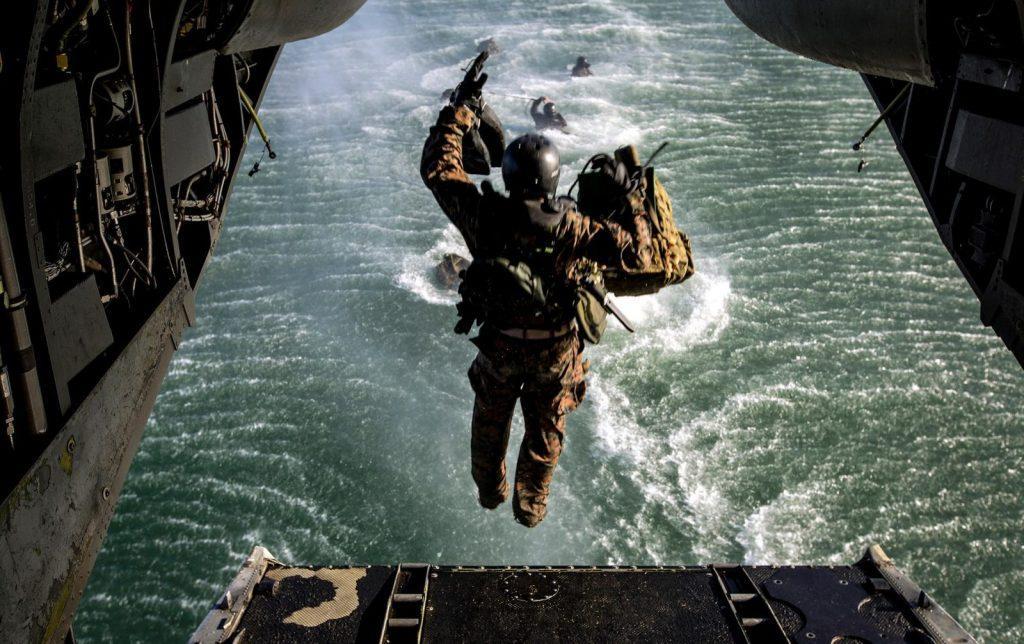
Missions of Reconnaissance battalions:
- Long-range reconnaissance and surveillance
- R.A.P. (Tactical Recovery of Aircraft Personnel)
- I.O. (Maritime Interdiction Operations)
- Hydrographic surveys & beach reconnaissance
- Small unit raids/selected prisoner snatches
- Harbor reconnaissance
- Underwater Searches
- Evacuation of American civilians from hostile environments (countries)
History
Recon Marines can trace their history back to the middle of World War II when two units were created that would influence the Marine Corps and lead to the development of the Reconnaissance Battalions.
World War II
The first was the Raider Battalion, which was formed in January of 1942 with the purpose of giving the US Marines Corps a raiding unit similar to the British Royal Marine Commandos. The Raiders took place in many landings, providing a light force that could strike hard and fast in different locations.
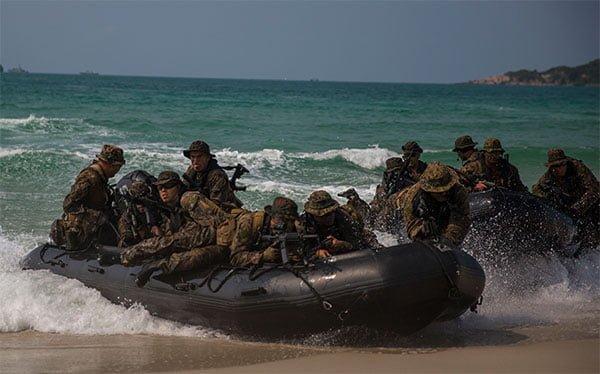
The second unit formed inside the US Marine Corps was a small group of two officers and twenty enlisted men that were formed as the “Observation Group” of the 1st Marine Division. Originally formed for the invasion of North Africa, the group was expanded to 98 Marines in 1943 and was rechristened the Amphibious Recon Company and sent to the Pacific theater. They were soon deployed via submarine to the island of Apamama to take place in the landing there. During the initial survey of the island, the unit was taken under fire. They returned fire and then established a beachhead for the follow-on invasion.
One of their Marines was killed in the action, but the higher command was so impressed with the effectiveness of the group that they were again expanded, this time to 20 officers, 270 enlisted, and 13 US Navy Doctors. They participated in landings from this point until the end of the war, including Tinian Island (where the B-29s dropped the atomic bombs that ended the war were later based), Iwo Jima, and Okinawa. Unlike many units after the war, they were not shut down.
Korean War
Recon existed in a limited form until the Korean War, where the need for their services saw another rise in their numbers. There was a great need for intel on North Korean forces and the Amphibious Recon Company was called to make landings in Northern Korea and report back their findings and also perform small raids against rail lines and tunnels. Some of these missions took place as far as 40 miles into N. Korean territory. Recon members operated closely with US Navy Underwater Demolition Teams during some of their missions.
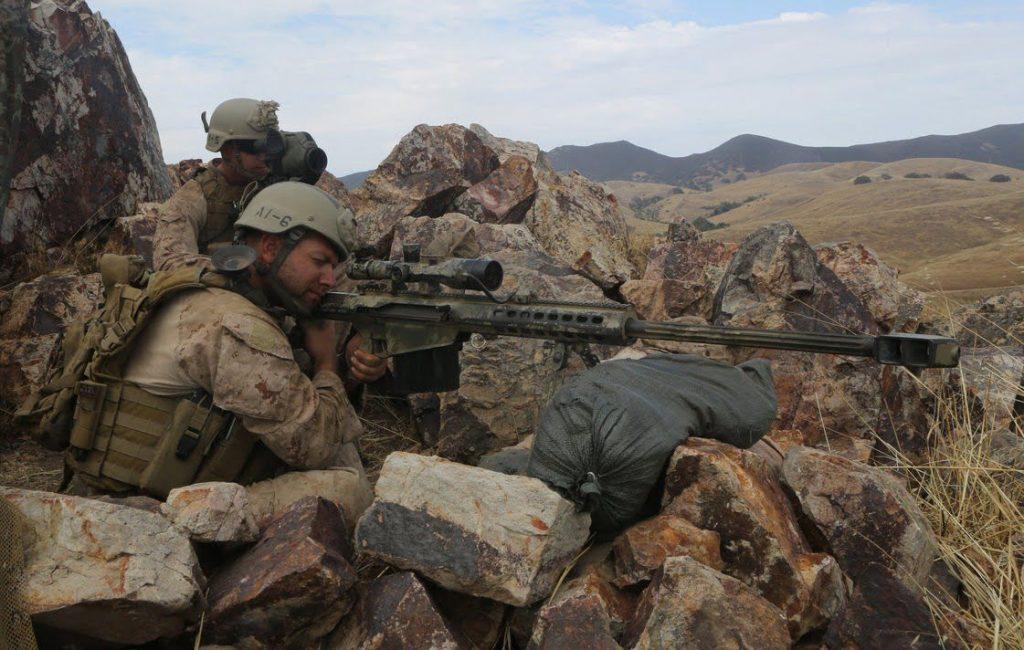
The slowdown of the war decreased the missions performed by the Recon Marines, but in March of 1951, the force was expanded and named the 1st Amphibious Recon Platoon. This unit served until the end of the war and beyond. After the Korean War, the US Marine Corps began a modernization and restructuring of the Recon Company. Members were sent to jump school at the Army’s Fort Benning, SCUBA school at Kaneohe, Hawaii, and to Coronado, California to learn inflatable boat skills from the Navy’s UDT’s. In 1957, the 1st Company of “Force” Recon Marines was formed. 2nd Company Force Recon was formed in June of 1958.
Vietnam War
During the Vietnam War, it was realized that the US Marine Corp had a deficiency in its ability to gather information on enemy forces. It was decided to bring the small teams of Recon Marines in-country where they would be inserted far behind enemy lines, normally for five to six-day missions. Once on the ground, they would scout for signs of Vietnamese forces and their strengths and habits. In some cases, they would set up ambushes or prisoner snatches to recover enemy documents or personnel for interrogation.
Because of their small size and distance away from other US forces, Force Recon teams would rely on stealth and avoid firefights. If caught, they could quickly become surrounded and overrun. Because of this they had much artillery and air support that was immediately available. If discovered, the Recon teams would pour out a furious amount of weapons fire to keep the Vietnamese forces pinned down while they escaped, hopefully with artillery or napalm strikes to provide covering fire. Such missions were dangerous and long and grueling, but members of Recon felt safer moving in small, quiet groups over larger and noisier ones.
Weaponry and Gear
Weapons used by Reconnaissance battalions included:
- M9
- M1911
- M-16A2
- M-16/203
- M-4
- Heckler and Koch MP5
- M-40 Sniper Rifle
- M-249 SAW
Today, Marines from USMC Reconnaissance battalions are one of the toughest and skilled warriors on the planet, ready to deploy and to act whenever are United States interests are in focus.



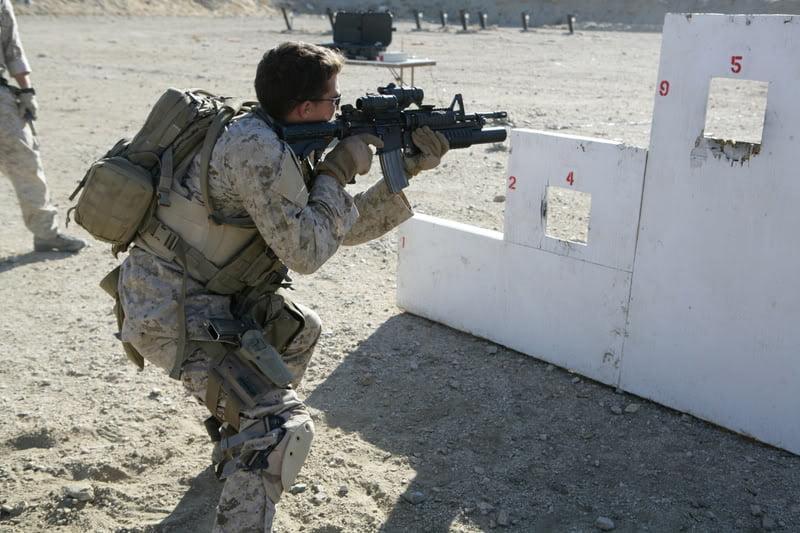
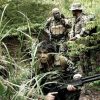
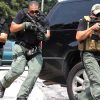
2/9 spent most time in South America Gorilla combat specialist